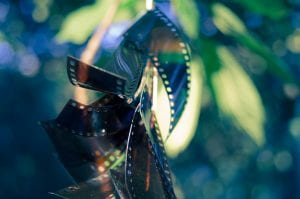Introduction
Saving Private Ryan (1998) dir. Steven Spielberg
- The camera is everywhere
- A lie to tell the truth
Three Colors: Blue (1993) dir. Krzysztof Kieślowski
- Use some sort of flashing light to link two different characters together
Casablanca (1942) dir. Michael Curtiz
Romantic movies are always in a rush
The Record of a Tenement Gentleman (1947) dir. Yasujirō Ozu
The romantic scene is a pause in the story
Hollywood isn’t classical but japan is
Odd Man Out (1947) dir. Carol Reed
Using bubbles to reflect and see own problems in the characters
Two or Three Things I Know About Her (1967) dir. Jean-Luc Godard
Taxi Driver (1976) dir. Martin Scorsese
Using bubbles to reflect and see own problems in the characters
The French Connection (1971) dir. William Friedkin
1895-1918: The World Discovers a New Art Form or Birth of the Cinema
Traffic Crossing Leeds Bridge (1888) dir. Louis Le Prince
The Kiss (1896 film) (a.k.a. May Irwin Kiss) (1896) dir. William Heise
Kissing is a moment that everyone can understand
Workers Leaving the Lumière Factory (1895) dir. Louis Lumière
Was the first movie that Lumiere shot
Arrival of a Train at La Ciotat (1896) dir. Louis Lumière
Was one of the first movies that was shown to more than just one person at a time
Annabelle Serpentine Dance (1894-1896 ?) dir. William Kennedy Dickson or William Heise
Want to make use be like a cowboy or and princess
Sandow (1894) dir. William Kennedy Dickson
What Happened on Twenty-third Street, New York City (1901) dir. George S. Fleming and Edwin S. Porter
Can give viusalys flash backs and other things
Cendrillon (1899) dir. Georges Méliès
Jump cuts was made by acadent
Le voyage dans la lune (1902) dir. Georges Méliès
La lune à un mètre (1898) dir. Georges Méliès
The Kiss in the Tunnel (1899) dir. George Albert Smith
Had the first tracking shot. Was shot in on the front of a train. Ended up being known as the phantom ride
Shoah (1985) dir. Claude Lanzmann
Used phantom ride to use as a more serious tone
2001: A Space Odyssey (1968) dir. Stanley Kubrick
Used phantom ride as a out of body experience
The Sick Kitten (1903) dir. George Albert Smith
Used the close up for the first time in cinema
October: Ten Days That Shook the World (1928) dir. Sergei Eisenstein
Uses close up of dead people to give people a sense of tragedy
Once Upon a Time in the West (1968) dir. Sergio Leone
Uses a closeup shot to show that the character ends up realising something important
The Corbett-Fitzsimmons Fight (1897) dir. Enoch J. Rector
Used a 65mm wide shot to get more of the scene for the first time
1903-1918: The Thrill Becomes Story or The Hollywood Dream
Life of an American Fireman (1903) dir. Edwin S. Porter
Keeps cutting inside and outside of the house to help the audience follow the story
Sherlock Jr. (1924) dir. Buster Keaton
Shot a scene using double exposure
The Horse that Bolted (1907) dir. Charles Pathé
Using cuts to show what’s happening at the same time
The Assassination of the Duke of Guise (a.k.a. The Assassination of the Duc de Guise) (1908) dir. Charles le Bargyand André Calmettes
The reverse angle shot first became a thing in cinema
Vivre sa vie (1962) dir. Jean-Luc Godard
Did not show the face of the actress gave a shocking effect
Those Awful Hats (1909) dir. D. W. Griffith
The Mended Lute (1909) dir. D. W. Griffith
The Abyss (1910) dir. Urban Gad
Less censorship in Europe so the actress became more famous
Stage Struck (1925) dir. Allan Dwan
Added costumes
Added an element of sublime to stardom
The Mysterious X (1914) dir. Benjamin Christensen
Drawing on film and cross-cutting was one of the most daring debuts in film history
Häxan (1922) dir. Benjamin Christensen
Ingeborg Holm (1913) dir. Victor Sjöström
Had natruliesem and grace
The Phantom Carriage (1921) dir. Victor Sjöström
Had stories within stories
Had moods within moods
Shanghai Express (1932) dir. Josef von Sternberg
Youth and glamor came out of its test tubes
The Story of the Kelly Gang (1906) dir. Charles Tait
Was the first feature-length film
The Squaw Man (1914) dir. Oscar Apfel and Cecil B. DeMille
The first Hollywood featured film
The Empire Strikes Back (1980) dir. Irvin Kershner
Because the editing was correct, Vader and his underling looked like they were looking at each other
Falling Leaves (1912) dir. Alice Guy-Blaché
Suspense (1913) dir. Phillips Smalley and Lois Weber
Uses a sideways pov shot and uses and split screen to show the wife, the husband, and the introter
Uses different angles to show the threat of the film
The Wind (1928) dir. Victor Sjöström
The wind shows the man that the women killed and it reminded the girl of her fears
Rescued from an Eagle’s Nest (1908) dir. J. Searle Dawley
The House with Closed Shutters (1910) dir. D. W. Griffith
Film had a tendency to be staged
Way Down East (1920) dir. D. W. Griffith
Orphans of the Storm (1921) dir. D. W. Griffith
Used the psychology intensity of a lens which made the actors stand out aginst backgrounds
The Birth of a Nation (1915) dir. D. W. Griffith
Showed the part of cinema and it’s danger
Mixed epic and intament
Rebirth of a Nation (2007) dir. DJ Spooky
Played with the toxic scene
Cabiria (1914) dir. Giovanni Pastrone
Moving dolly shots
Intolerance (1916) dir. D. W. Griffith
Cuts where saying look all of these different events show the same human tratis
Souls on the Road (a.k.a. Rojo No Reikan) (1921) dir. Minoru Murata
Two stories intertwine at the end of the film into one story
